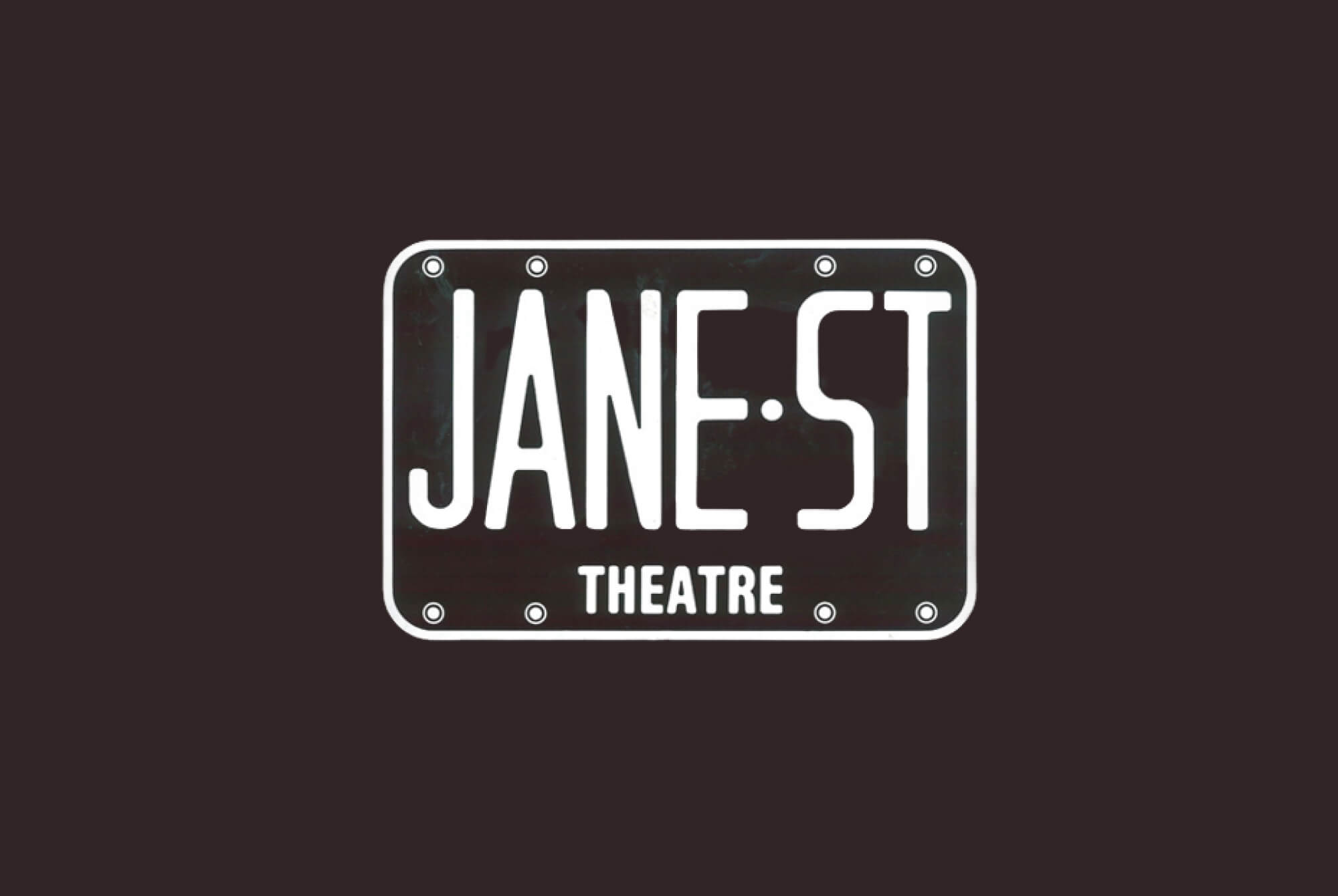In 2009, NIDA celebrated the 50th Anniversary of the Jane Street Theatre and the Jane Street Season of Plays with a series of archival photographic displays and digital galleries. Serving as a catalyst for the development and performance of original Australian work, the Jane Street Theatre marked a pivotal moment in the development of the Australian theatre scene and the emergence of many of our iconic plays and playwrights, each an example of our uniquely Australian voice and artistic perspective.
The tiny Jane Street Theatre, Randwick, was converted from a church hall in 1966, and the Jane Street Season of Plays was an early initiative led by the UNSW Drama Foundation and NIDA to support Australian theatre. From 1966 to 1982, there were 15 Seasons, totalling 36 productions that showcased Australian playwriting and experimental theatre, while providing opportunities for young professional actors and NIDA students in performance and production.
Over the years, the Seasons showcased many new playwrights, directors and actors, who went on to become important figures in Australian cultural life: Thomas Keneally, Tony Morphett, Alma de Groen, David Williamson, Bob Ellis and Michael Boddy, John Bell, Rex Cramphorn, William Yang, Aubrey Mellor, John Clark, George Whaley; Robyn Nevin, Gillian Jones, Kate Fitzpatrick, Mel Gibson, Geoffrey Rush and Kerry Walker.
Some interesting facts about the Jane Street Seasons include:
- There was a resident company of young professional actors.
- Seminal works include The Legend of King O’Malley and Don’s Party.
- The Jane Street ghost was said to inhabit the church hall turned theatre, its presence noted by a sudden drop in temperature.
Read more about the Jane Street Season 1966-1982 or browse the galleries for some of the wonderful photographs taken by Robert Walker and others. Please contact the NIDA Library and NIDA Archives for access to the Jane Street holdings.
Jane Street Gallery
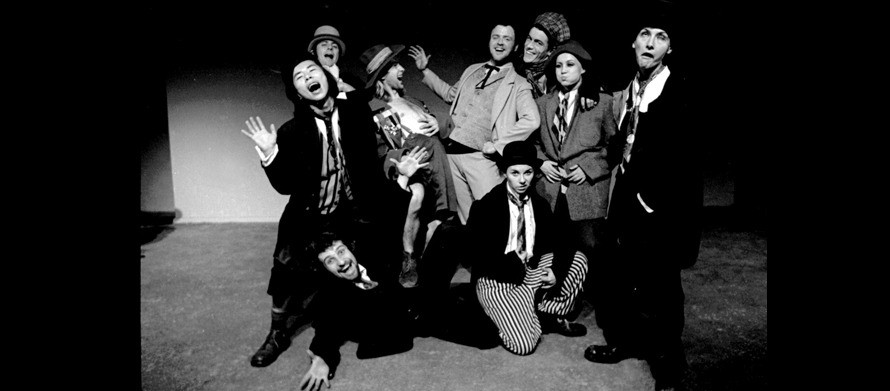
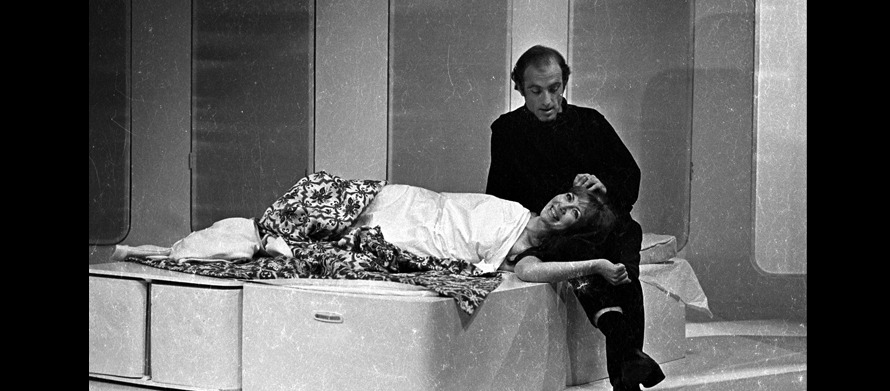
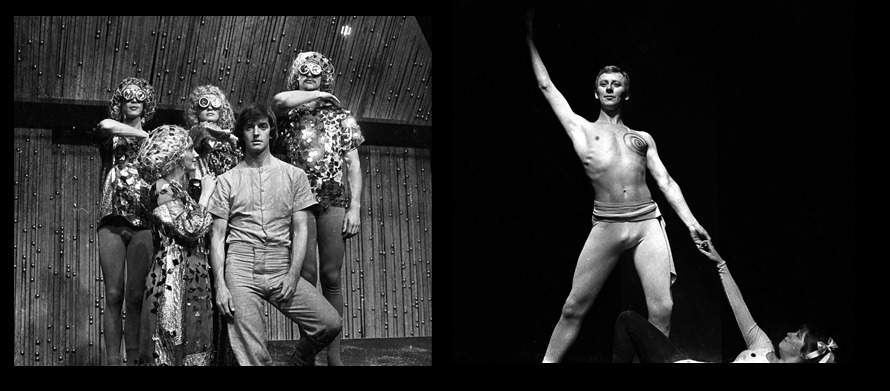
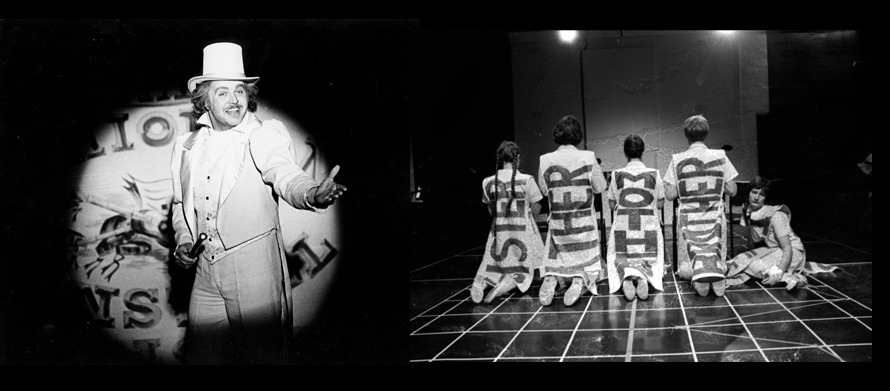
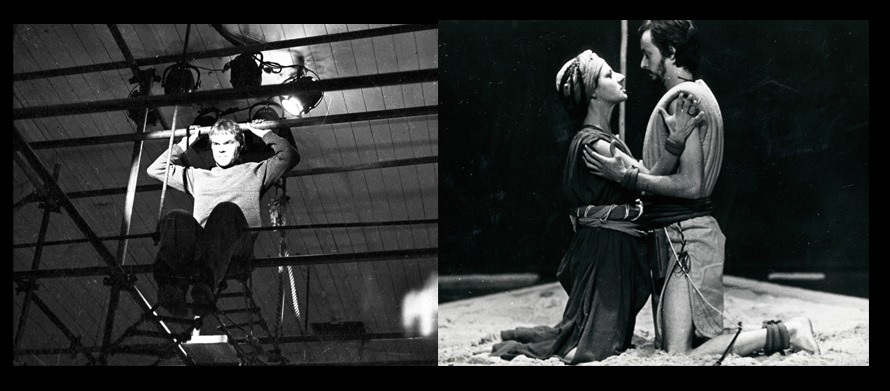

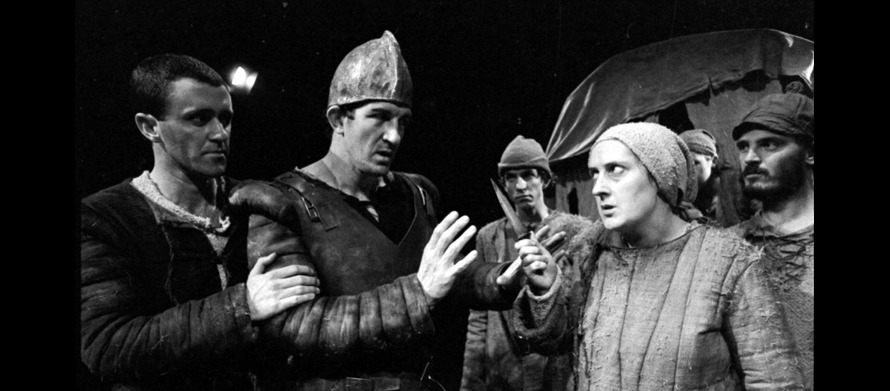
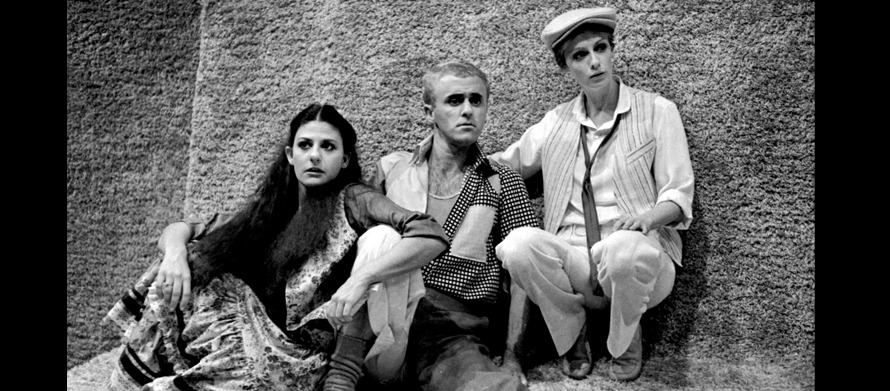
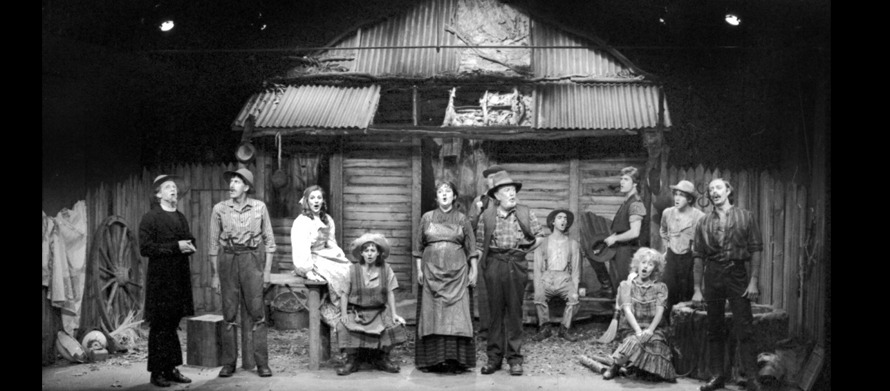
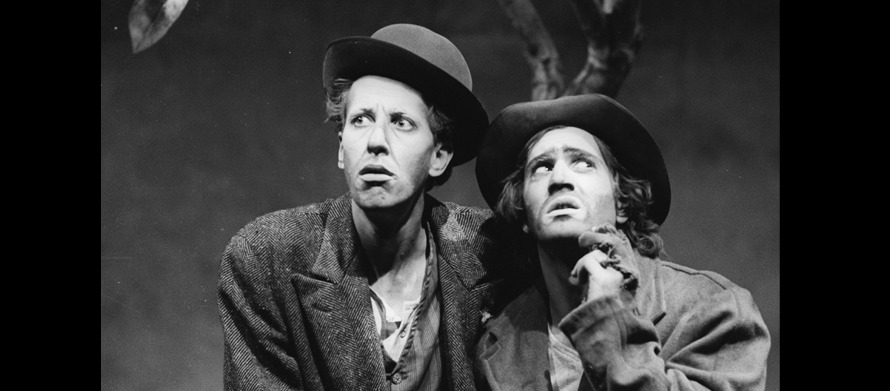
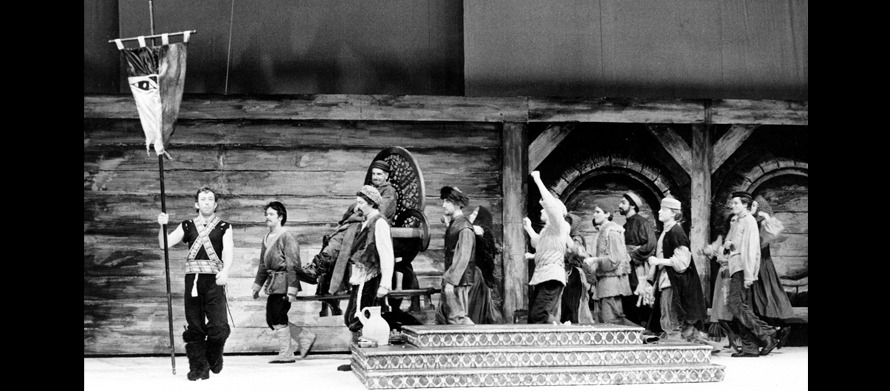
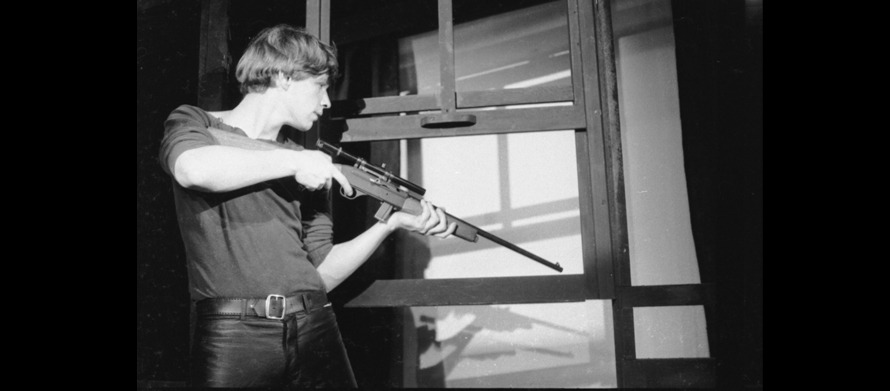
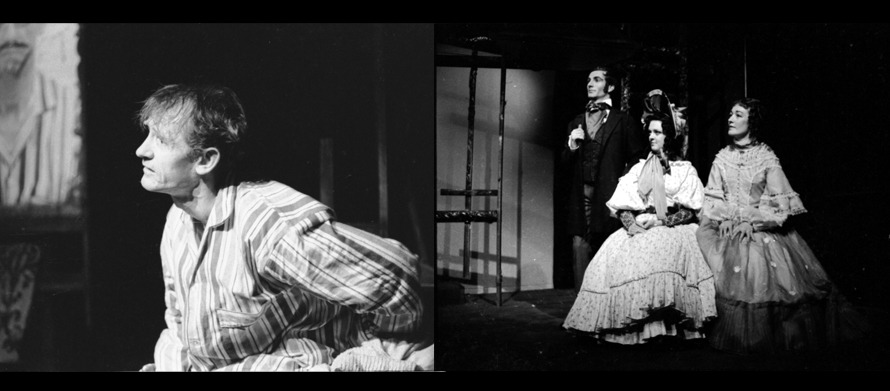
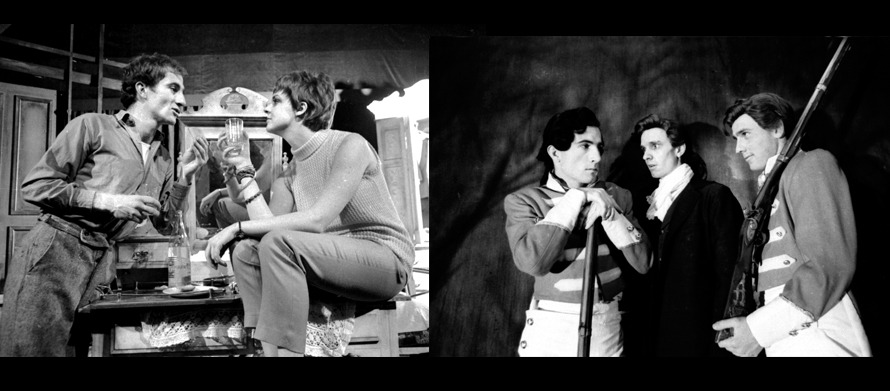
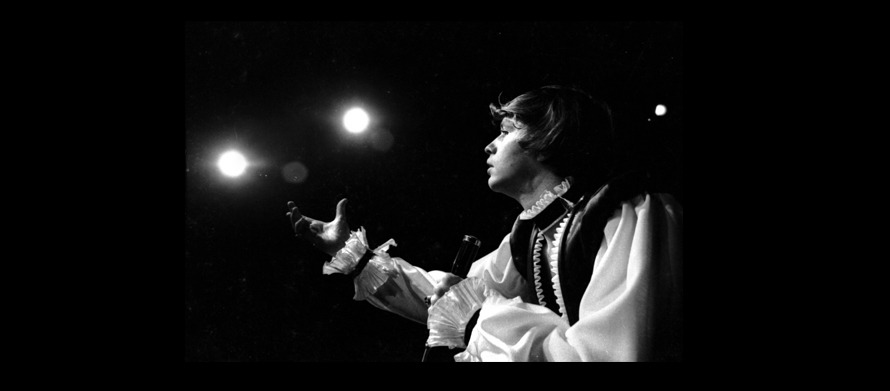
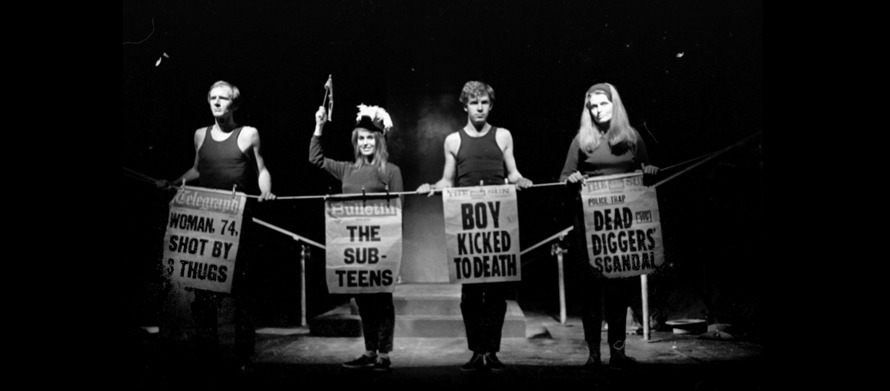
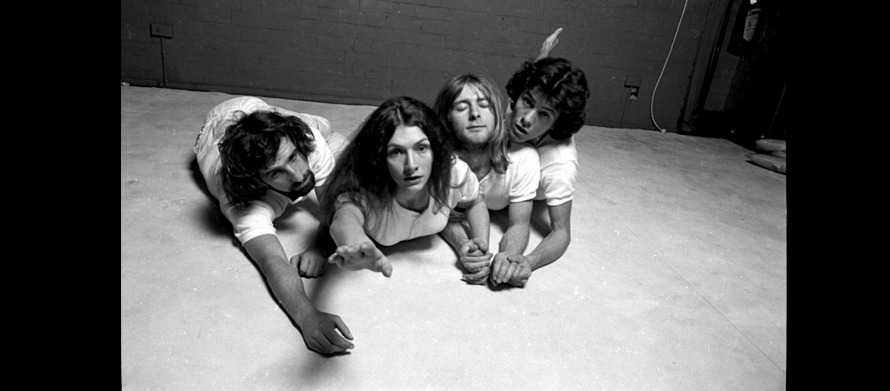
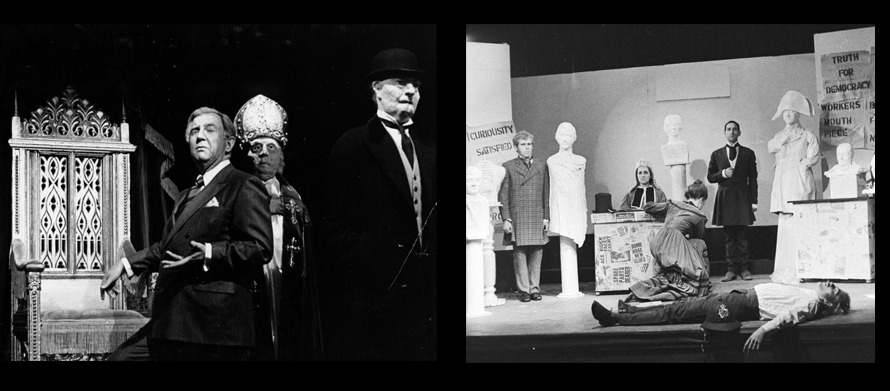
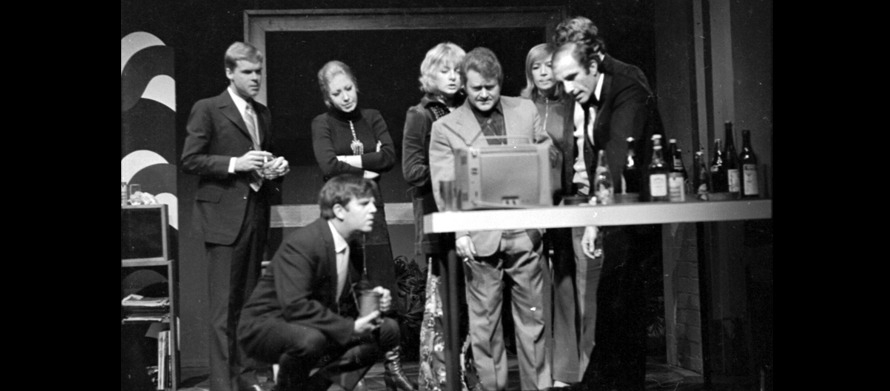
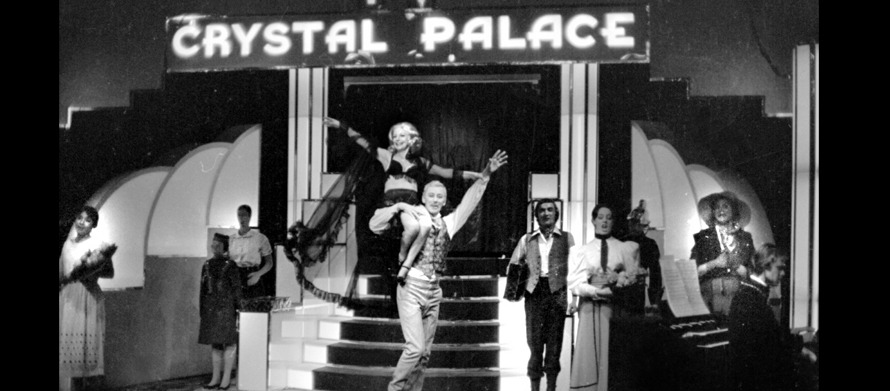
Learn more about Jane Street
The Jane Street Season was conceived by Robert Quentin in 1965. Quentin had been the inaugural director of NIDA, but had left NIDA in 1963 to concentrate on his role as Foundation Lecturer (later Professor) in the University of New South Wales (UNSW School of Drama). However, he was still very involved in both NIDA and the Old Tote Theatre Company, which was managed by the NIDA Board of Directors. In response to a discussion on the Old Tote’s lack of support for Australian playwriting generated by the writer Frank Hardy, Quentin suggested that UNSW might secure ‘a small hall near Barker Street which could be used as a little theatre… [for] a company which would present seasons of Australian plays and serve as a workshop theatre for Australian writers.’
A number of ideas coalesced: in early 1966, the UNSW Drama Foundation was formed as a charitable trust from which the funding for NIDA, the Old Tote Theatre, and the Jane Street Season, amongst other ventures, could be funded. This replaced the existing funding stream through the Australian Elizabethan Theatre Trust. As Quentin had requested, UNSW leased a former Mission Hall and church located on the corner of Jane and Middle Streets, Randwick, which NIDA students painted and helped convert into a 100-seat theatre. A grant of $12,000 was secured from the Portugal-based Calouste-Gulbenkian Trust for an inaugural season of Australian playwriting at the Jane Street Theatre, which opened on 1 October 1966. On offer were one newly commissioned play, four premieres, and one revised early colonial text: an all-Australian season at a time when the Australian vernacular was rarely heard on stage.
Funding was not assured for a follow up Jane Street Season, and only one play was performed in 1968. The Old Tote Theatre Company staged its all-Australian Season in that year but unlike the Jane Street Season, it received a mixed reception and was a financial disaster. From 1969 NIDA assumed the administration of the Jane Street Season, funded first by the NSW Government and from 1970, by the Australia Council. The Drama Foundation continued to commission plays for production at Jane Street. The availability of NIDA staff and acting, production and technical production students helped to keep costs down.
As the 1970s saw more theatre companies performing new Australian works and greater support for Australian playwrights through other means, the Jane Street Season changed focus. From 1978 the Season produced reinterpretations of well-known classic plays, particularly 19th century Australian and modern European plays, making them accessible for young audiences. The Season was now primarily a vehicle for the NIDA Advanced Course students rather than a means of providing new opportunities for playwrights.
Funding concerns and the sale of the Jane Street Theatre in 1980 meant the 1982 Jane Street Season at the Parade Theatre and proved to be the last. In all, some 36 productions had been staged over 15 Seasons, including 12 successfully commissioned plays, nine premieres of Australian works, and three major commercial successes.
Since the late 1950s, when two new Australian plays, One Day of the Year (written by Alan Seymour in 1958) and The Summer of the Seventeenth Doll (written by Ray Lawler in 1959), had proved both critical and commercial successes, the search was underway for both the next Doll and an authentic Australian national theatre.
Robert Quentin, a keen supporter of developing a professional Australian theatrical voice, first introduced a playwriting short course at NIDA in 1961. In its second year Professor Norman Philbrick from Stanford University led the course but ongoing funding was limited. In 1966, at the helm of the University of New South Wales (UNSW) Drama Foundation, Quentin commissioned a number of new plays for production at Jane Street, including Thomas Keneally’s first play, Halloran’s Little Boat (1966) and his third, An Awful Rose (1972).
In 1972 and 1973 the NIDA Playwrights Studio course was resurrected, led by David Whittaker, and in 1974, NIDA commissioned two Playwrights Studio participants, George Hutchinson and Alan Simpson working with composers Mervyn Drake and James Cotter respectively, to provide the Season’s entertainment. Following workshops at the Australian National Playwrights Conference (established 1973, now Playwriting Australia), Alma de Groen’s fourth play The After-life of Arthur Craven and a first work by Ken Ross, Don’t Piddle Against the Wind, were produced at Jane Street.
During the 1970s, however, more opportunities for the development and production of Australian plays emerged as new theatre companies such as Nimrod (established December 1970) and, in Melbourne, La Mama Theatre (1967) and the Australian Performing Group (APG) at the Pram Factory (1970) started to feature new Australian theatre.
In 1978, NIDA, decided to move away from producing new Australian plays in favour of new interpretations of classic plays. However, one of the major hits of the 1979 Season was George Whaley’s On Our Selection, based on the writings of Steele Rudd: an enduring image of Australiana.
First season 1966
The 1966 Season comprised three short plays performed as a trio and three plays, including Tom Keneally’s first play, Halloran’s Little Boat, directed by Alexander Hay and the premiere of A Refined Look at Existence, written by Rodney Milgate and directed by Robin Lovejoy.
Keneally’s first play, commissioned by Robert Quentin, is based on the subject matter of Keneally’s 1967 novel Bring Larks and Heroes, which won the Miles Franklin Award that year. Both explore the early days of penal colony in the South Pacific. The play was well received and performed at a number of amateur theatres following its debut. In 1968, Keneally wrote Childermas for the Old Tote Theatre Company Season, and An Awful Rose(a religious comedy) in 1972, which was also critically acclaimed and transferred to a second season at the Old Tote.
Rodney Milgate started his career as a Channel 7 newsreader in the 1960s, and, while he continued to write, he was better known as Professor of Visual Art at the City Art Institute (now Arts and Design, UNSW). Perhaps the most challenging and engaging of the first season of plays, A Refined Look of Existence was reprised at the Old Tote in 1968 with a different cast. The director, Robin Lovejoy said:
‘It involved the audience in a most extraordinary, and for me, a most elating way. It was the most exciting thing I’d ever done on the theatre. To feel the audience response, this was the peak of everything I’d ever done.’
Don’s Party 1972
Don’s Party
Written by David Williamson
Directed by John Clark
Performed 29 June 1972–22 July 1972
Although not the premiere of this play, which was at the Australian Performing Group (APG) in Melbourne in 1971, John Clark’s production of Don’s Party was certainly more popular with audiences and critics and proved a more commercial success. The production transferred to the Old Tote Theatre with the same cast, where it continued to enthusiastic reviews and a national tour. While Williamson’s The Removalists, performed at Nimrod in 1971, is generally described as his breakthrough play, the success of Don’s Party helped to cement Williamson’s place at the forefront of new wave theatre.
A series of letters between Williamson and Clark, held in the NIDA Archives, documents the rewriting and rehearsal process. After opening night, Williamson wrote thanking Clark for his respect and sympathy for the play:
‘To yourself & the cast – my sincere thanks – the opening night was one of the best moments I’ve had.’
The Jane Street set for Don’s Party, designed by second year NIDA production student Lindsay Megarrity is the sole remaining Jane Street artefact of its type complete with faux Marimekko design. The model is in the NIDA Archives.
1977 Season
Don’t Piddle Against the Wind, Mate.Written by Kenneth G Ross
Directed by John Tasker
Performed 20 June 1977 — 30 June 1977
Ken Ross’ play was first workshopped at the 1977 National Playwrights’ Conference Theatre Forum before being staged at Jane Street. Directed by John Tasker, whose grandfather had been a militant unionist in the Hunter Valley, the play deals with unionism and the personal toll that taking a stand – in this case against the union – has on family and friends.
Ross notes in a foreword to the play that the work was inspired by real events from some years earlier. Ross was interested in issues of identity and ideals, urbanisation and anonymity. Frances Kelly in The Australian (22 July 1977) reviewed it highly, suggesting it could rival ‘The Doll’. The critics Kessell and Kippax both lauded the performance of Ron Graham as Bob Davies. Kippax (The Sydney Morning Herald, 23 July 1977) declared the play was ‘honest and powerful’ and was deserving of a wider audience.
The University of New South Wales (UNSW) Drama Foundation had initiated the 1966 Season of plays at Jane Street, and continued to have a role funding commissioned plays, but increasingly the production of the Season fell to the NIDA Administration. Most Jane Street directors were working at NIDA in some capacity, although others were contracted for the purposes of the Season. The roll call of directors includes some of Australia’s best known practitioners: Rex Cramphorn, Alexander Hay, John Clark, Aubrey Mellor, George Whaley, Robin Lovejoy, John Bell, John Tasker, Richard Cottrell, Richard Wherrett, Jim Sharman and John Milson.
Jane Street was able to develop as an experimental theatre venue, not just showcasing new plays, but also new forms of production. While it was expected Randolph Stow would submit a new commissioned work for the follow up 1967 Season, the play was never written and there was no Season that year. Instead, early in 1968, Jim Sharman facilitated the first of what might be called the experimental theatre works: Terror Australis,a devised play between Sharman, the actors, and contributing writers associated with the satirical Oz Magazine. The 1970 Season also saw two quite distinctive productions: the highly influential The Legend of King O’Malley, directed by the new tutor in Acting, John Bell, and a much more underrated critical success, 10,000 Miles Away, directed by NIDA graduate and actor Rex Cramphorn. While performed by the same company of actors, these two directors explored quite different concepts of theatrical development and performance: on the one hand Australian larrikin theatre, and on the other, experimental Grotowskian techniques with an emphasis on process rather than performance.
Following the success of the 1970 Season, Clark wrote seeking suitable scripts:
‘We have a young company of eight and fairly limited resources – which tends to exclude technical extravaganzas and middle aged, middle class, middle of the road conventional pieces. We are far more inclined to outrageous, unconventional and fairly youthful activity.’
Whether the following Seasons lived up to that claim or not, certainly the work of the Performance Syndicate, and that of William Yang (then Willy Young) in later Seasons challenged traditional roles and conventions. In 1975, the two productions, Mariner and Interplay were described as deliberately presenting alternative approaches to new work, for both the director and composer.
1968 Terror Australis
Terror Australis
Devised and directed by Jim Sharman.
Performed on 8 March 1968 – 30 March 1968
Having graduated from the NIDA Production course in 1965, Jim Sharman was employed by NIDA as a Resident Producer, working at the Old Tote Theatre, NIDA and on affiliated activities. Robert Quentin determined to continue in some way the Jane Street initiative, invited Sharman to present a new work in early 1968.
Terror Australis was a devised work developed during the rehearsal process between Sharman, the actors – Helen Morse, Garry McDonald, Jennifer West and Peter Rowley – and three of the Oz Magazine writers with whom Sharman had previously worked during the production of the satirical review Oz on Stage (Dean Letcher, Richard Raper and Richard Walsh).
Sharman recounts in his book Blood & Tinsel, the play was ‘a spirited attack on many Australian sacred cows’, with audience members crawling through a sheep-run to enter the theatre. Criticism from the Sydney Morning Herald reviewer Harry Kippax, led Patrick White to write a letter praising the show – an event remembered fondly by Sharman, whose later friendship with White saw him direct White’s plays to great acclaim.
1970: The Legend of King O’Malley
The Legend of King O’Malley or Never Say Die till a Dead Horse Kicks YouWritten by Michael Boddy and Robert Ellis
Directed by John Bell
Performed 11 June 1970–27 June 1970
This seminal piece of Australian New Wave theatre was submitted for the 1970 Captain Cook Bi-Centenary Celebrations literary competition where it won the $3000 first prize in the play section. Directed by the newly appointed NIDA Acting tutor, John Bell, the play transferred from Jane Street to the Old Tote Theatre and then toured nationally and to the South Pacific and New Zealand.
With its musical numbers and vaudeville style complete with foyer sideshows, O’Malley had energy, humour and youth. Cramphorn writes about the experience in his tour diary (Bulletin, 27 February 1971), noting the exigencies of company size, limited budget and small theatre, counter balanced by the shared enthusiasm of the cast, ensured the success of the initial production. Certainly, O’Malley was heralded as bringing the New Wave to Sydney and was instrumental in the founding of the Nimrod Theatre Company in December 1970.
1970: 10,000 Miles Away
10,000 Miles Away
Written by David Malouf and Willy Young
Directed by Rex Cramphorn
Performed on 2 July 1970–18 July 1970
10,000 Miles Away had started as a performance piece by David Malouf, written for the Cook Bicentenary in 1970. Reprising it at Jane Street, the newly formed Performance Syndicate turned the play into a form of ‘audio-visual theatre’, with white-clad actors, acrobatics, ritual movement and words as music. The basic premise was a ‘free form look at what makes man the explorer’.
The 1970 company comprised NIDA graduates Rex Cramphorn and the Performance Syndicate actors including Nick Lathouris, Gillian Jones, Terry O’Brien, David Cameron, along with Robyn Nevin, Kate Fitzpatrick and Willy Young, who had been invited to Jane Street by John Clark. The Syndicate had formed prior to joining Jane Street, and continued as a fluid group over the next few years, both at Jane Street, and in other cities. Cramphorn sought a space for continuous work in one theatre, to train regularly as a company but subsidisation was a major impediment, and the Syndicate had disbanded by 1974. At Jane Street a number of productions involving Syndicate members were produced along a collective creative model where rehearsal was intrinsic to the development of the performance.
The performance was developed over a two week rehearsal period and was an intense period of exercises, improvisations, and personal and collaborative exploration, closely following Growtowski’s ideals. Spinks argues it truly broke new frontiers in Australian theatre. Although its influence is now overlooked, at the time it was enthusiastically reviewed and the Performance Syndicate actors drew impetus from the cohesion it brought.
Credited as co-author with Malouf’s agreement, Willy Young, now well known as the photographer and performance artist, William Yang, arrived in Sydney in 1969 having completed a Bachelor of Architecture at the University of Queensland. Yang went on to develop and act in a number of other Jane Street productions including Childhead’s Dollin 1973, and Interplay in 1975. The latter, a play within a play, is documented by a set of 24 photographs captioned by Yang, showing the progression from concept to performance.
From its inception, the Jane Street Season had relied on NIDA students and staff to contribute personnel and resources. The Season was established along the lines of repertory theatre: having a resident company rehearsing and performing in all plays was a traditional way of mitigating risks across a short season. The original NIDA Diploma in Acting was a two-year course and in 1966 NIDA sought funding for an Advanced Course in Acting to provide recent graduates with further training and a regular allowance. While the link between Jane Street and the Advanced Course was not planned, the first intake of students was employed on the 1966 Season, working alongside more seasoned professionals.
The Advanced Course in Acting students became the nucleus of each Season’s company. For young professionals Jane Street presented an opportunity for continuous work for a period of time: the 1970 students received $40 per week for 20 weeks, for example. For NIDA Design and Technical Production students the Jane Street Season was a fixture in the practical coursework. Fiona Reilly, then a design student at NIDA, remembers her involvement as designer of the 1973 production of Bon Bons and Rose for Dolly as a wonderful opportunity.
In 1973, NIDA introduced a three-year accredited Diploma of Dramatic Art. The Advanced Course continued as a fourth-year postgraduate opportunity, offering work to alumni such as Mel Gibson, Robert Menzies and Kerry Walker. Not all performers were graduates: Geoffrey Rush, newly arrived from Brisbane, was cast with Mel Gibson in the 1979 production of Waiting for Godot. While the later Jane Street productions are sometimes overlooked in critical appraisals of the Jane Street oeuvre, the 1979 Season production On Our Selection and the inclusion of Jane Street in the inaugural Sydney Theatre Company season that same year proved successful. The final Jane Street play Camino Real (1982) was also positively reviewed.
However, by 1983, the changes in funding sources and the sale of the Jane Street Theatre led to the demise of the concept of a semi-professional repertory-based company, at least for a time. During the late 1970s there had been plans to expand the Advanced Course and Jane Street model, but in 1984 the Advanced course was replaced with a Centre for Performance Practice, offering fee-based workshops and seminars, including the third incarnation of the Playwrights Studio.
In 1988, graduates Hilary Bell and Nell Schofield staged a new NIDA/Jane Street Season, a concept that was expanded in 1990 with the launch of the NIDA Company. The NIDA Company performed one or two plays per year until 2006 in much the same spirit as the original Jane Street Theatre.
Mother Courage and her Children
Written by Bertolt Brecht
Directed by Aubrey Mellor
Performed 21 June 1978–22 July 1978
In 1978, the Jane Street Season changed tack completely and focused on directors reinterpreting Australian classics or European texts. Brecht was, at the time mostly performed by university students or community theatre and the production at Jane Street was the first professional production of Mother Courage in Sydney. The 1978 Advanced Course in Acting, which formed the nucleus of the Jane Street resident company, included Kerry Walker, Angela Punch McGregor, and Robert Menzies, with performances described as memorable (Kippax, Sydney Morning Herald, 23 June 1978). Mother Courage was extended by a week it proved so popular. That same year Punch McGregor won two Australian Film Institute (AFI) awards, but couldn’t attend as she was on stage at Jane Street in As You Like It.
Another Brecht play, The Caucasian Chalk Circle was directed by John Clark in 1979 as part of the inaugural Sydney Theatre Company season (at the Opera House Drama Theatre), curated by John Clark and Elizabeth Butcher. Starring Peter Carroll and Jennifer Hagan amongst a cast of 35, the production also included NIDA students in addition to the professional actors. Mervyn Drake’s music was featured with 54 songs written for the play. The play was enthusiastically reviewed.
On Our Selection
Adapted and directed by George Whaley
Performed 20 June 1979–14 July 1979
Whaley’s adaptation of On Our Selection was a popular success and it transferred to Nimrod in 1979, before Whaley produced it as a feature film with Geoffrey Rush in 1995.
The genesis of the play adapted by Whaley is the books by Steele Rudd and a production script held by the 1920s start of the stage and films, Bert Bailey. As Whaley noted in a foreword to the Nimrod program, they ‘tried hard to retain the spirit of the books and the original play. We freely incorporated folk songs, folk tunes with new words written to suit the action’.
The Advanced Course students that year included NIDA alumni Mel Gibson, Kerry Walker and Robert Menzies, as well as Geoffrey Rush, who had studied in France with Jacques Lecoq. Geoffrey Rush regularly taught at NIDA when Whaley was Head of Acting.
Gibson and Rush also featured in the second Jane Street production that year, Waiting for Godot.
Camino Real
Written by Tennessee Williams
Directed by Richard Cottrell
Performed 12 May 1982–12 June 1982 at the Parade Theatre.
English director Richard Cottrell had been working freelance in Australia and elsewhere since 1980, and was at NIDA teaching classes at the time of the production.
The 1982 Jane Street Season opened the Parade Theatre in March 1982, NIDA having secured the theatre for its own purposes following the demise of the Old Tote Theatre in 1978. On stage for Camino Real were a mixture of ten seasoned professionals including Ron Haddrick, Alexander Hay, Maggie Dence and Kate Fitzpatrick and 24 NIDA Acting students. The set, designed by Axel Bartz, was reviewed as ‘astounding’ with three to four levels, giving depth and height.
The performance started in the foyer: menacing, aggressive military ushers, inspected the audience, who were required to bear entry permits, which had replaced tickets. Mexican food was provided at interval. Cottrell himself found the production ‘enormously enjoyable’. Reviewing it in The Australian, Jane Cazdow considered the production a gamble that paid off.
It was, however, along with Rex Cramphorn’s The Provok’d Wife, the last Jane Street Season. The productions served to showcase NIDA’s move to the Parade Theatre rather than provide work for the Advanced Course in Acting. In 1988, as NIDA moved to the new purpose-built complex on Anzac Parade, new opportunities for young professional actors and writers opened up with the new NIDA/Jane Street Season, and the NIDA Company.
Robert Walker (1922–2007)
Robert Walker was one of the principal photographers commissioned by NIDA to document plays and activities in the 1960s and 70s. He was also the main photographer of plays at the Jane Street Theatre (1966-1982) and Old Tote Theatre Company (1963-1978). Walker’s photographic archive relating to NIDA, Jane Street and the Old Tote Theatre, was recently donated to NIDA by his widow Louise Walker.
Robert Walker was born in Singleton, NSW but enlisted with the British Royal Air-force (RAF) during WWII. He returned to Australia in 1952 and first became interested in photography when working in advertising. According to Robert McFarlane (Sydney Morning Herald 19 March 2007), he taught himself how to use the office Rolle flex and was ‘immediately entranced’.
Robert honed the art of theatre photography for the modern age, moving beyond staged ‘set-up’ photographs to a fluid, photojournalistic visual approach, often choosing this more difficult technique to photograph during actual performances. In order to do this, Robert Walker mastered the photographic techniques necessary for working under the low, challenging lighting conditions frequently encountered in the theatre. Robert Walker’s way of documenting theatre would deeply influence a generation of ‘performance’ photographers who would follow him, such as Robert McFarlane and Branco Gaica. It is a reflection of Robert Walker’s invaluable contribution to Australian Theatre that over ninety productions are represented in the NIDA Archives.
Images from the Robert Walker Archive are held at the NIDA Archives and licensed by the Walker family to Viscopy. All images presented as part of the Jane Street online exhibition are courtesy of the Robert Walker Archive.
Branco Gaica (1979 Season, 1982 Season)
Branco Gaica is one of Australia’s foremost photographers of the performing arts. He was taught and inspired by Robert Walker’s work in the theatre. As well as the Jane Street Season images taken between 1979 and 1982, Branco has photographed the Sydney Theatre Company, Opera Australia, Sydney Dance Company and The Australian Ballet amongst many other major companies. Branco photographed most of the NIDA productions, events and students between 1993 and 2005.
William Yang (Interplay, 1975)
William Yang was born in North Queensland, Australia. He moved to Sydney in 1969 and worked as a freelance photographer documenting Sydney’s social life which he has described as “including the glamorous, celebrity set and the hedonistic, sub-cultural, gay community”.
In 1989 he integrated his skills as a writer and a visual artist. He began to perform monologues with slide projection in the theatre. These slide shows have become the main expression of his work. They tell personal stories and explore issues of identity. He has done eleven full-length works and most of them have toured the world. Tony Ayres made his most successful piece, “Sadness” into an award winning film in 1999.
William’s current work is photo based, doing performances in theatres and exhibitions in galleries, and story telling workshops. He has just converted three of his live performance pieces into films at the University of NSW.
Dennis Del Favero (The Provok’d Wife, 1982)
Dennis Del Favero is a Scientia Professor and research artist at the UNSW Faculties of Art & Design and Engineering.
Over 15 Seasons, some 36 Productions were presented at the Jane Street Theatre. Details of cast and crew are available from Ausstage.
1966 Season
I’ve Come About the Assassination
Written by Tony Morphett; Directed by Robin Lovejoy
Opened 1 October 1966
The Currency Lass
Written by Edward Geoghegan; Directed by Robin Lovejoy
Opened 1 October 1966
The Pier
Written by Michael Thomas; Directed by Robin Lovejoy
Opened 1 October 1966
The Lucky Streak
Written by James Searle; Directed by Alexander Hay
Opened 18 October 1966
A Refined Look at Existence
Written by Rodney Milgate; Directed by Robin Lovejoy
Opened 1 November 1966
Halloran’s Little Boat
Written by Thomas Keneally; Directed by Alexander Hay
Opened 15 November 1966
1968 Season
Terror Australis
Devised and directed by Jim Sharman
Opened 8 March 1968
1969 Season
The Rise and Fall of Boronia Avenue
Written by Tony Morphett; Directed by John Clark
Opened 24 July 1969
Rooted
Written by Alex Buzo; Directed by Rick Billinghurst
Opened 14 August 1969
1970 Season
The Legend of King O’Malley
Written by Michael Boddy & Robert Ellis; Directed by John Bell
Opened 11 June 1970
10,000 Miles Away
Written by David Malouf and Willy Young; Directed by Rex Cramphorn
Opened 2 July 1970
1971 Season
King Edward
Written by William Leonard Marshall; Directed by John Clark
Opened 8 July 1971
Truth
Written by David Young; Directed by Aubrey Mellor
Opened 29 July 1971
Childhead’s Doll
Written by Willy Young; Music by Ralph Tyrrell; Directed by Bryan Nason
Opened 19 August 1971
1972 Season
An Awful Rose
Written by Thomas Keneally; Directed by Alexander Hay
Opened 1 June 1972
Don’s Party
Written by David Williamson; Directed by John Clark
Opened 29 June 1972
Tilly Devine
Written by Berwyn Lewis; Directed by Bruce Widdop
Opened 27 September 1972
1973 Season
The After-Life of Arthur Cravan
Written by Alma de Groen; Directed Richard Wherrett
Opened 31 May 1973
Bon-Bons and Roses for Dolly
Written by Dorothy Hewett; Directed by Alexander Hay
Opened 28 June 1973
Cooper and Borges
Written and composed by Willy Young & Ralph Tyrell; Directed by John Milson
Opened 26 July 1973
1974 Season
My Shadow and Me
Written by George Hutchinson; Directed by Dennis Gill & Adam Salzer
Opened 17 July 1974
Muriel
Written by Alan Simpson; Directed by Rex Cramphorn
Opened 14 August 1974
1975 Season
Mariner
Written by Michael Cove; Directed by Rex Cramphorn
Opened 18 June 1975
Interplay
Written by Willy Young; Directed by Rex Cramphorn
Opened 16 July 1975
1976 Season
Le Chateau D’Hydro-Therapie Magnetique
Written by Helmut Bakaitis; Directed by Rex Cramphorn
Opened 23 June 1976
Trespassers Will Be Prosecuted
Written by Peter Kenna; Directed by George Whaley
Opened 21 July 1976
1977 Season
The Ripper Show (and how they wrote it)
Written by Frank Hatherley; Directed by Stanley Walsh
Opened 15 June 1977
Don’t Piddle Against the Wind, Mate
Written by Kenneth G Ross; Directed by John Tasker
Opened 20 July 1977
1978 Season
Mother Courage and her Children
Written by Bertolt Brecht; Directed by Aubrey Mellor
Opened 21 June 1978
As You Like It
Written by Shakespeare; Directed by Aubrey Mellor
Opened 1 August 1978
1979 Season
On Our Selection
Adapted and Directed by George Whaley
Opened 20 June 1979.
Waiting for Godot
Written by Samuel Beckett; Directed by George Whaley
Opened on 25 July 1979
The Caucasian Chalk Circle
Written by Bertolt Brecht; Directed by John Clark
Opened on July 1979 at the Sydney Opera House, Drama Theatre
1980 Season
The Bride of Gospel Place
Written by Louis Esson; Directed by Aubrey Mellor
Opened on 17 June 1980
The Dybbuk
Written by Solomon Anski; Directed by John Clark and Ros Horin
Opened on 30 July 1980
1982 Season
The Provok’d Wife
Written by Sir John Vanbrugh; Directed by Rex Cramphorn
Opened on 31 March 1982 at the Parade Theatre
Camino Real
Written by Tennessee Williams; Directed by Richard Cottrell
Opened on 12 May 1982 at the Parade Theatre
Donate to the library
The Rodney Seaborn Library accepts donated materials that are relevant to our existing collections. We welcome the opportunity to discuss potential donations to our collection; however, we are limited in the quantity of donations we can accept.
To learn more about the kinds of materials we are interested in and how to donate to the library, select the drop-down boxes for more information.

